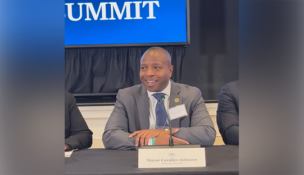Shake up in disability bias litigation
By: KIMBERLY ATKINS, BridgeTower Media Newswires//September 11, 2012//
Shake up in disability bias litigation
By: KIMBERLY ATKINS, BridgeTower Media Newswires//September 11, 2012//
Employment attorneys say that they have seen an increase in disability-related charges since final regulations under the Americans with Disabilities Act Amendments Act went into effect more than a year ago.
Lawyers say they have also noticed a dramatic change in the Equal Employment Opportunity Commission’s approach to disability bias investigations.
The EEOC has been “more aggressive” since the regulations were handed down, said Eric Kinder, an attorney at Spilman, Thomas & Battle in Charleston, W.Va.
Last year, the EEOC issued final regulations under the 2009 ADA Amendments Act, a law that broadened the definition of “disability.” The Act also expanded claimants’ ability to bring “regarded as” disability bias claims by focusing the inquiry on how an employee is treated by an employer rather than on the employer’s belief about the nature of the employee’s disability.
The new, expanded definitions prompted lawyers who represent employers to warn their clients that an increase in ADA-related claims could follow. That prediction was confirmed with the most recent EEOC statistics, which revealed that, in 2011, 25,742 disability discrimination charges were filed, up from 19,453 in 2008, the year before the law was passed.
EEOC priority
EEOC officials say they intend to continue to place a high priority on disability-related claims. In its draft Strategic Enforcement Plan released Sept. 4, the agency identified ADA Amendments Act-related claims as the top emerging employment issue in the nation’s workforce.
The plan promised “swift and responsive attention” to issues surrounding the investigation and litigation of disability bias claims, including “coverage issues, and the proper application of ADA defenses, such as undue hardship, direct threat, and business necessity.”
EEOC commissioners are even embarking on a nationwide speaking tour during the month of September in an effort to educate and engage employers and other stakeholders about the new rules.
“The more American employers understand how to comply with the ADA Amendments Act, the less confusion and misunderstanding there will be over workplace accommodations, and that’s a win-win for everyone,” Mary McIver, director of the EEOC’s Training Institute, said in a statement.
The outreach program will feature EEOC Commissioners Chai Feldblum and Victoria Lipnic, as well as employment law attorneys, human resources experts and other federal officials.
Presumed disabled
The new, broader interpretation of what constitutes a disability is responsible for significant changes in the litigation of disability claims since the enactment of the ADA Amendments Act.
For example, courts had long held that obesity did not constitute a disability under the ADA unless it was related to an underlying medical condition that was recognized under the law. In the wake of the ADA Amendments Act, the EEOC has taken a broader interpretation of the meaning of disability, resulting in charges being filed against employers alleging obesity-related discrimination.
“The threshold now is much, much lower,” said David Korn, a partner at Phelps Dunbar in New Orleans. “The expansive nature of the definition is very inclusive.”
The definition is so broad, lawyers say, that the EEOC’s investigations no longer start with determining the employee’s limitations, but rather the employers’ actions to accommodate them.
“The EEOC is essentially skipping any determination of whether something is a disability,” said Kinder. “It’s largely presuming the existence of the disability and moving straight to the issues of accommodation and hardship.”
Korn said that although he still sees factual determinations on the disability issue, it is rarely where the litigation ends.
“There are still cases where a person claims to have a disability, and it is not substantially limiting,” Korn said. “But where in the past there were many, many summary judgments granted [in employers’ favor] on that issue, I see that trend changing.”
Proactive approach to accommodations
That trend has spurred lawyers to reach out to clients to stay ahead of potential litigation. “I’m doing more front-end work with clients,” Kinder said.
Korn, too, encourages his employer clients to be proactive.
“What I tell my clients is, any time [an employee] claims to have a physical or mental impairment, [the employer] should have an individual, one-on-one discussion with the employee” about accommodations, Korn said. “Be open with them. Say: ‘This is what you want, and this is what we can do, and can we reach an agreement together?’”
Reading EEOC guidance on the accommodation issue is helpful – but only to a point. The more disabilities that are covered under the law, the more individualized and fact-specific each request for accommodation can be.
“The EEOC issues plenty of guidance [and] there is case law, but when you are dealing with issues such as what constitutes an undue hardship, none of it fits perfectly into an employment environment,” Korn said.
In some situations, the accommodation issue may also implicate other laws, making the analysis more complicated. For example, if a worker injures himself on the job, that injury constitutes a disability and he needs extended leave, the ADA, Family and Medical Leave Act and workers’ compensation laws come into play simultaneously.
“The EEOC has taken the position, in some cases, that extended leave is a reasonable accommodation,” Korn said. “Clients will ask me, “How much of an accommodation is necessary? How much is too much?’ It’s difficult to say.”
Legal News
- Some State Bar diversity participants walk away from program
- Wisconsin court issues arrest warrant ‘in error’ for Minocqua Brewing owner
- Iranian nationals charged cyber campaign targeting U.S. Companies
- Facing mostly white juries, are Milwaukee County defendants of color truly judged by their peers?
- Milwaukee Mayor speaks in D.C. Tuesday at White House water summit
- Chicago man sentenced to prison after being caught with ‘Trump Gun’
- FTC bans non-competes
- Gov. Evers seeks applicants for Dane County Circuit Court
- Milwaukee man charged in dismemberment death pleads not guilty
- Democratic-led states lead ban on the book ban
- UW Madison Professor: America’s child care crisis is holding back moms without college degrees
- History made in Trump New York trial opening statements
WLJ People
- Power 30 Personal Injury Attorneys – Russell Nicolet
- Power 30 Personal Injury Attorneys – Benjamin Nicolet
- Power 30 Personal Injury Attorneys – Dustin T. Woehl
- Power 30 Personal Injury Attorneys – Katherine Metzger
- Power 30 Personal Injury Attorneys – Joseph Ryan
- Power 30 Personal Injury Attorneys – James M. Ryan
- Power 30 Personal Injury Attorneys – Dana Wachs
- Power 30 Personal Injury Attorneys – Mark L. Thomsen
- Power 30 Personal Injury Attorneys – Matthew Lein
- Power 30 Personal Injury Attorneys – Jeffrey A. Pitman
- Power 30 Personal Injury Attorneys – William Pemberton
- Power 30 Personal Injury Attorneys – Howard S. Sicula











